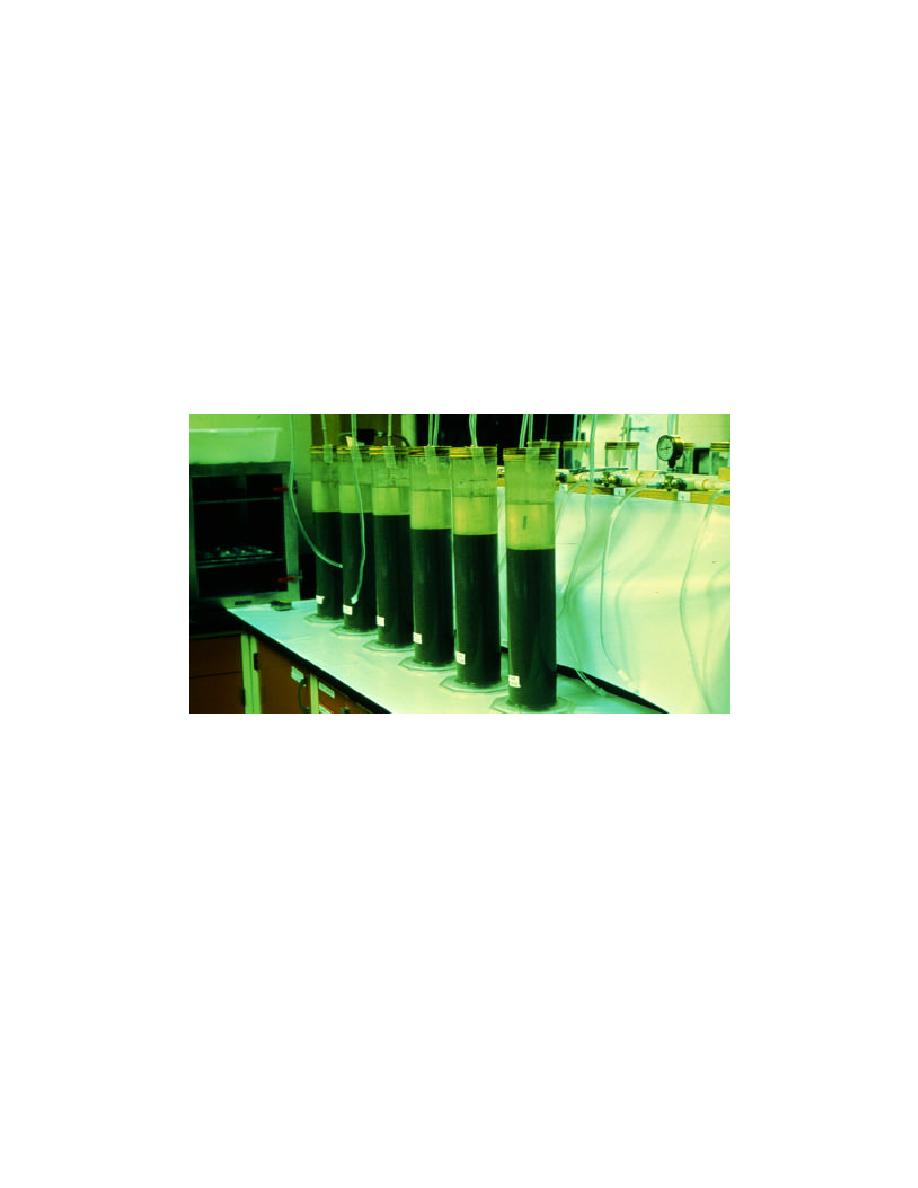 |
||
|
|
||
|
Page Title:
Figure 4-4. Photo of typical laboratory setup for the effluent elutriate test |
||
| |||||||||||||||
|
|
 in the CDF supernatant water during active disposal operations (Palermo 1985a-d;
Palermo and Thackston 1988a and b). EET results define the concentration of
COCs discharged from the CDF (i.e., over the weir structure), therefore an
evaluation of initial mixing should be conducted (Appendix E) prior to
comparisons with WQS.
Figure 4-4 is a photo of a typical laboratory setup for the EET. Sediment and
water from the dredging site are mixed into a slurry with a solids concentration
equivalent to that expected in the CDF inflow. The slurry is placed in 4-L
cylinders and aerated for 1 hour to ensure that oxidizing conditions will be present
during the subsequent settling phase. The aerated slurry is allowed to settle for a
time period equivalent to the expected field mean retention time in the CDF, up to
a maximum settling time of 24 hour. The supernatant water is extracted from the
cylinders and analysed as the effluent elutriate. The results may then be compared
with applicable water quality standards after consideration of initial mixing.
Figure 4-4. Photo of typical laboratory setup for the effluent elutriate test
Depending on the basis of applicable WQS (Section 2.3.2), the prediction of
the quality of effluent from CDFs accounts for the dissolved concentration of
contaminants and may also consider that fraction associated with the released total
suspended solids. If the WQS are applied to dissolved concentrations, the effluent
elutriate samples are analysed for dissolved contaminants only, and the results are
compared to WQS after consideration of initial mixing (this approach is identical
to that for effluent in the ITM).
If the WQS are applied to whole water concentrations, both the EET and
LTCST are required. For this evaluation, the EET determines the contaminant
partitioning between dissolved and particulate phases, while the LTCST
determines the total particulates (TSS) in the effluent. In this case, the EET
samples are analysed for TSS concentration and for both dissolved contaminants
and total concentrations of contaminants, allowing for determination of both
dissolved and particle-associated contaminant concentrations. Using results from
both the EET and an estimate of effluent TSS from the LTCST, a mass balance
4-12
Chapter 4
Effluent During Disposal Operations
|
|
Privacy Statement - Press Release - Copyright Information. - Contact Us - Support Integrated Publishing |